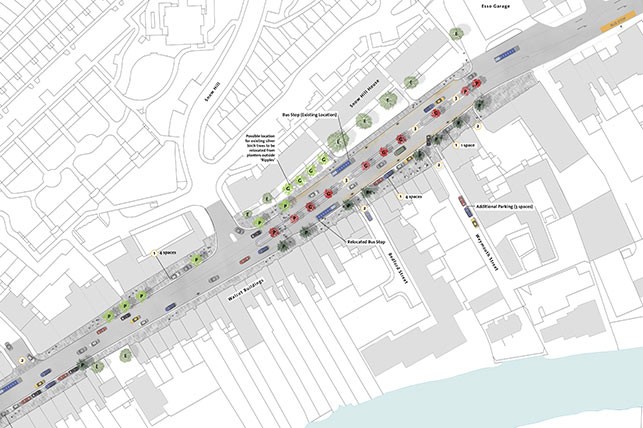Twenty-three properties in the London Road area have been given a face lift, after being awarded financial grants by Bath & North East Somerset Council.

Grants totalling £121,000 were awarded to property owners and leaseholders, who were given the chance to apply for money to improve the front of their building as part of the London Road Regeneration project.
The aim of the project is to arrest the environmental decline of the major gateway into Bath.
The grant scheme was the first of its kind to be run by the Council.
Owners within the project area were able to apply for a grant of 75% of the cost of the works, up to a maximum of £15,000 per property.
29 applications were received and of these, grants were offered to 23 properties.
Careful consideration was given to whether the work fitted within the rules of the capital funding of the project and all the properties were assessed by a listed buildings officer.
The grants helped to fund a range of works including the renewal of historically correct frontages, the re-instatement of missing features important to the original design and the cleaning and repair of exterior stonework.
Cllr Paul Crossley (Lib-Dem, Southdown), Leader of the Council, said: “The grant scheme has helped to transform the London Road area, enabling the restoration of historic properties which would otherwise have continued to deteriorate.
“The involvement of local people, throughout the entire regeneration process, has been crucial to its success.”
Bath & North East Somerset Council’s £1.3m regeneration of the London Road area has put local people at the heart of the decision making process in making improvements to their environment.
It’s been led by a local community group, the London Road Gateway group, comprised of 13 members, including local residents from the London Road area, representatives from the local business community and ward members.
Over the past eighteen months kerbs and footpaths have been re-aligned, new paving has been installed, adjustments have been made to the central reservation, street lighting has been amended, pedestrian traffic signals have been upgraded and improvements made to the existing cycling provision.
New trees, specially commissioned artwork and street furniture have also been installed.
Improvements have been made to Walcot Terrace with the provision of off peak loading bays to serve local businesses and the number of on street parking places has been increased.
Cllr Lisa Brett (Lib-Dem, Walcot) said: “This is a community led project, local residents helped to shape the changes through the projects community steering group.
“It’s a huge improvement and they should be proud of what has been achieved. The re-generation has also attracted over £3M in inward investment from the private sector and non-for profit organisations.”
The project, which is on budget, is due to be completed in April.




1 Comment
Sheila Hawken
Wednesday 18th March, 2015 at 18:36I am appalled by the “improvementt” carried out to date. The patyterned paving is completely inappropriate in this historic setting, but far worse, y difficult for a wide variety of disabled people to cope with. TAhoe with autism, with visula processing issues, people with epilepsy and visual impairments find it vetry difficult to look at these patyterns at all. The layout is unhelpful to those with visual impairments who need to usethe kerb for orientation and what, I presume is the path at one point, is restricted by a huge road sign near the building line-not helpful for those with visual impairments or wheelchair users. As an electric wheelchair user I cannot go along thism pavement now as it makes me feel sick even before I move and the sideways patterns direct one away from the forward line of motion one is trying to keep to. On the garage side, the camber of the pavement is steep-very poor for manula wheelchair users and anyone with balance problems will have difficulty. The kerb near Morrisons is also dangerous for those with visual impairments, as there is only a narrow path-not wide enouigh for wheelchairs. There is also a dropped kerb which isn’t, with a lump of tarmac dumped on the road, which does not even line up with the pimpled paving, thus misleading visually impaired people as to where there will not be a drop from the kerb!Similar mistakes have been made elsewhere, so why has Bath, yet again opted for such trendy designs, without, appaarently consulting with disabled people over the plans? Widcombe is also awful. One might have expected that 20 years after the first Disability Discrimination Act cvame in that there would be an effective system of consultation, staff would have more awareness of disability issues.With a greater proportion of older people , the built environment should be fully accessible to all.